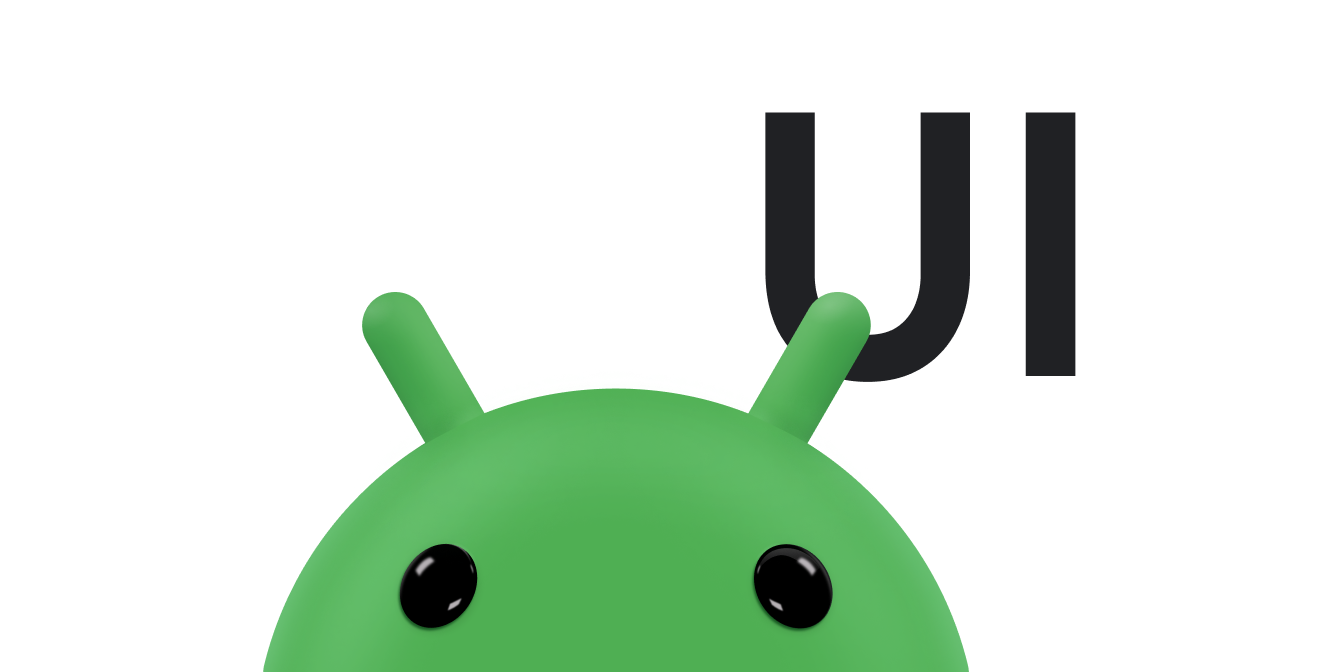A multi-touch gesture is when multiple pointers (fingers) tap the screen at the same time. This document describes how to detect gestures that involve multiple pointers.
Track multiple pointers
When multiple pointers tap the screen at the same time, the system generates the following touch events:
ACTION_DOWN: sent when the first pointer taps the screen. This starts the gesture. The pointer data for this pointer is always at index0in theMotionEvent.ACTION_POINTER_DOWN: sent when extra pointers enter the screen after the first. You can obtain the index of the pointer that just went down usinggetActionIndex().ACTION_MOVE: sent when a change occurs in a gesture, involving any number of pointers.ACTION_POINTER_UP: sent when a non-primary pointer goes up. You can obtain the index of the pointer that just went up usinggetActionIndex().ACTION_UP: sent when the last pointer leaves the screen.ACTION_CANCEL: indicates that the entire gesture, including all pointers, is canceled.
Start and end gestures
A gesture is a series of events starting with an ACTION_DOWN
event and ending with either an ACTION_UP or
ACTION_CANCEL event. There is one active gesture at a time. The
actions DOWN, MOVE, UP, and CANCEL apply to the entire gesture. For example, an
event with ACTION_MOVE can indicate a movement for all pointers
down at that moment.
Keep track of pointers
Use the pointer's index and ID to keep track of the individual pointers
positions within a MotionEvent.
- Index: a
MotionEventstores pointer information in an array. The index of a pointer is its position within this array. Most of theMotionEventmethods take the pointer index as a parameter, rather than the pointer ID. - ID: each pointer also has an ID mapping that stays persistent across touch events to allow for tracking of an individual pointer across the entire gesture.
Individual pointers appear within a motion event in an undefined order. Thus,
the index of a pointer can change from one event to the next, but the pointer ID
of a pointer is guaranteed to remain constant as long as the pointer remains
active. Use the
getPointerId()
method to obtain a pointer's ID to track the pointer across all subsequent
motion events in a gesture. Then, for successive motion events, use the
findPointerIndex()
method to obtain the pointer index for a given pointer ID in that motion event.
For example:
Kotlin
private var mActivePointerId: Int = 0 override fun onTouchEvent(event: MotionEvent): Boolean { ... // Get the pointer ID. mActivePointerId = event.getPointerId(0) // ... Many touch events later... // Use the pointer ID to find the index of the active pointer // and fetch its position. val (x: Float, y: Float) = event.findPointerIndex(mActivePointerId).let { pointerIndex -> // Get the pointer's current position. event.getX(pointerIndex) to event.getY(pointerIndex) } ... }
Java
private int mActivePointerId; public boolean onTouchEvent(MotionEvent event) { ... // Get the pointer ID. mActivePointerId = event.getPointerId(0); // ... Many touch events later... // Use the pointer ID to find the index of the active pointer // and fetch its position. int pointerIndex = event.findPointerIndex(mActivePointerId); // Get the pointer's current position. float x = event.getX(pointerIndex); float y = event.getY(pointerIndex); ... }
To support multiple touch pointers, you can cache all active pointers with
their IDs at their individual ACTION_POINTER_DOWN and
ACTION_DOWN event time. Remove the pointers from your cache at
their ACTION_POINTER_UP and ACTION_UPevents. You might
find these cached IDs helpful to handle other action events correctly. For
example, when processing an ACTION_MOVE event, find the index for
each cached active pointer ID, retrieve the pointer's coordinates using the
getX()
and
getY()
functions, then compare these coordinates with your cached coordinates to
discover which pointers moved.
Use the getActionIndex() function with
ACTION_POINTER_UP and ACTION_POINTER_DOWN events
only. Don't use this function with ACTION_MOVE events, as this
always returns 0.
Retrieve MotionEvent actions
Use the
getActionMasked()
method or the compatibility version
MotionEventCompat.getActionMasked()
to retrieve the action of a MotionEvent. Unlike the earlier
getAction()
method, getActionMasked() is designed to work with multiple
pointers. It returns the action without the pointer indices. For actions with a
valid pointer index, use getActionIndex() to return the index of
the pointers associated with the action as shown in the following snippet:
Kotlin
val (xPos: Int, yPos: Int) = MotionEventCompat.getActionMasked(event).let { action -> Log.d(DEBUG_TAG, "The action is ${actionToString(action)}") // Get the index of the pointer associated with the action. MotionEventCompat.getActionIndex(event).let { index -> // The coordinates of the current screen contact, relative to // the responding View or Activity. MotionEventCompat.getX(event, index).toInt() to MotionEventCompat.getY(event, index).toInt() } } if (event.pointerCount > 1) { Log.d(DEBUG_TAG, "Multitouch event") } else { // Single touch event. Log.d(DEBUG_TAG, "Single touch event") } ... // Given an action int, returns a string description. fun actionToString(action: Int): String { return when (action) { MotionEvent.ACTION_DOWN -> "Down" MotionEvent.ACTION_MOVE -> "Move" MotionEvent.ACTION_POINTER_DOWN -> "Pointer Down" MotionEvent.ACTION_UP -> "Up" MotionEvent.ACTION_POINTER_UP -> "Pointer Up" MotionEvent.ACTION_OUTSIDE -> "Outside" MotionEvent.ACTION_CANCEL -> "Cancel" else -> "" } }
Java
int action = MotionEventCompat.getActionMasked(event); // Get the index of the pointer associated with the action. int index = MotionEventCompat.getActionIndex(event); int xPos = -1; int yPos = -1; Log.d(DEBUG_TAG,"The action is " + actionToString(action)); if (event.getPointerCount() > 1) { Log.d(DEBUG_TAG,"Multitouch event"); // The coordinates of the current screen contact, relative to // the responding View or Activity. xPos = (int)MotionEventCompat.getX(event, index); yPos = (int)MotionEventCompat.getY(event, index); } else { // Single touch event. Log.d(DEBUG_TAG,"Single touch event"); xPos = (int)MotionEventCompat.getX(event, index); yPos = (int)MotionEventCompat.getY(event, index); } ... // Given an action int, returns a string description public static String actionToString(int action) { switch (action) { case MotionEvent.ACTION_DOWN: return "Down"; case MotionEvent.ACTION_MOVE: return "Move"; case MotionEvent.ACTION_POINTER_DOWN: return "Pointer Down"; case MotionEvent.ACTION_UP: return "Up"; case MotionEvent.ACTION_POINTER_UP: return "Pointer Up"; case MotionEvent.ACTION_OUTSIDE: return "Outside"; case MotionEvent.ACTION_CANCEL: return "Cancel"; } return ""; }
Additional resources
For more information related to input events, see the following references:

